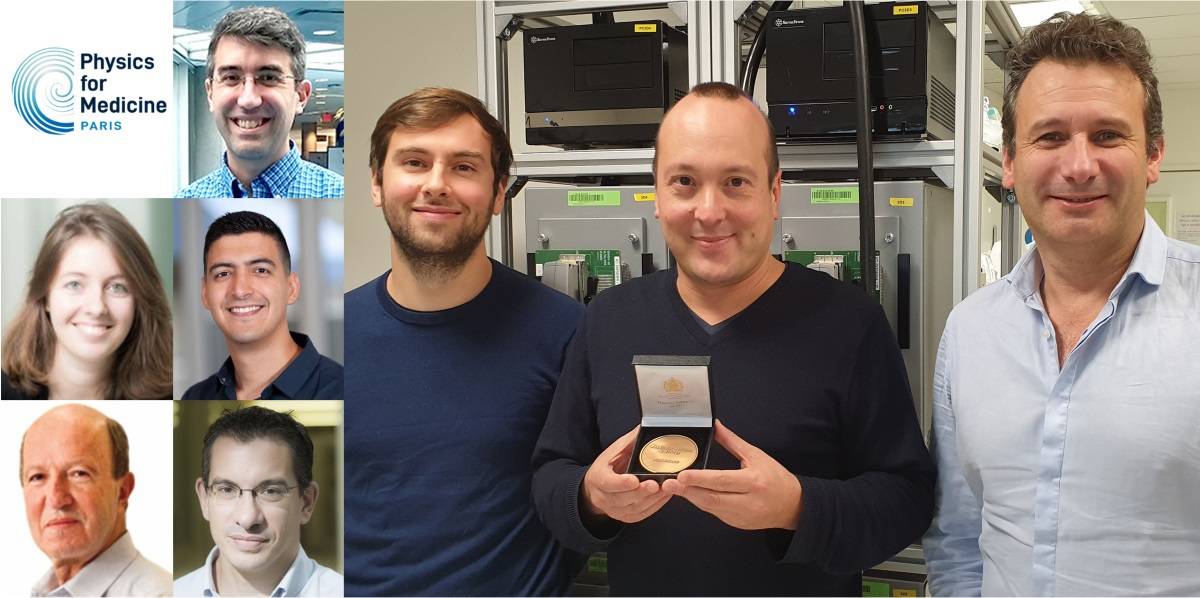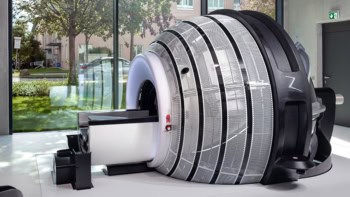
A research paper describing an ultrasound imaging technique that can produce ultrafast 3D videos has won its authors the 2019 Physics in Medicine & Biology (PMB) citations prize. This annual prize recognizes the PMB paper that received the most citations in the preceding five years.
The paper, 3D ultrafast ultrasound imaging in vivo, was written by researchers from Physics for Medicine, formerly Institut Langevin (ESPCI ParisTech, CNRS, INSERM and PSL Research University) in France. The winning study, which also won the Roberts Prize for the best paper published in PMB in 2014, describes the first implementation of a novel ultrasound technique that produces 3D videos at thousands of frames per second.
The researchers achieved this high imaging rate by extending their previous work on 2D ultrahigh-frame-rate ultrasound imaging to three dimensions. To do this, they used diverging or plane waves emitted from a sparse virtual array located behind the probe. They designed a customized portable ultrasound system that samples 1024 independent channels and drives a 32×32 matrix-array probe. Graphics processing units were employed to speed the processing of the backscattered signals.
The 3D ultrafast ultrasound system achieved high contrast and resolution. Lead author Mathieu Pernot and colleagues demonstrated its use for several potential applications, including 3D mapping of stiffness and tissue motion, as well as the first real-time imaging of blood flowing through the chambers of a human heart.
Rapid progress
In the years since the paper was published, the field of 3D ultrafast ultrasound imaging has progressed rapidly. Pernot’s team and other groups have used the technique for applications including imaging cardiac blood flow and tissue in the human heart, myocardial fibre imaging, coronary flow imaging and functional brain imaging in animals.
“3D ultrafast imaging remains today a research tool, but the miniaturization of the technology is progressing rapidly and cost-effective solutions are emerging,” says Pernot. “Clinical systems could become available in the next few years.”
As for why the paper attracted so many citations, Pernot suggests that it introduced a transition from ultrasound being perceived as a low-tech imaging modality with high operator dependency to a flexible tool for imaging entire organs with high spatial and temporal resolutions.
“This is a new paradigm for ultrasound imaging,” he says. “3D ultrafast imaging can provide, in quasi-real time, quantitative parameters such as myocardial stiffness or functional connectivity of the brain, which remain challenging to image with other modalities.”
The PMB citations prize is marked with the presentation of the Rotblat medal, named in honour of Sir Joseph Rotblat, PMB’s second and longest-serving editor. “We feel very honoured and proud to receive the Rotblat medal,” Pernot tells Physics World. “Our team, Physics for Medicine, is pursuing the development of new imaging and therapeutic modalities for many years with the support of our institutions and funding organisations such as the ERC and the ANR. The Rotblat Medal is an important recognition of our efforts to achieve these goals at the highest scientific level.”
- The winner of the 2019 Physics in Medicine & Biology citations prize is: 3D ultrafast ultrasound imaging in vivo by Jean Provost, Clement Papadacci, Juan Esteban Arango, Marion Imbault, Mathias Fink, Jean-Luc Gennisson, Mickael Tanter and Mathieu Pernot Phys. Med. Biol. 59 L1



